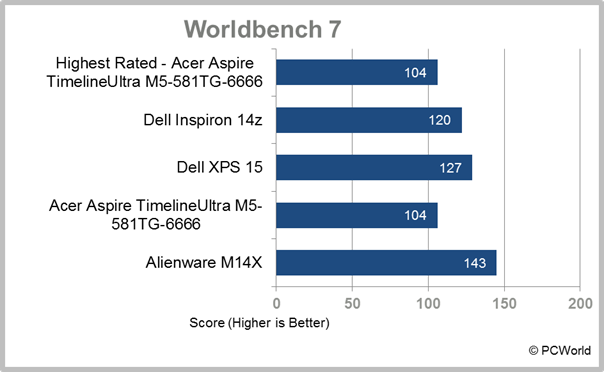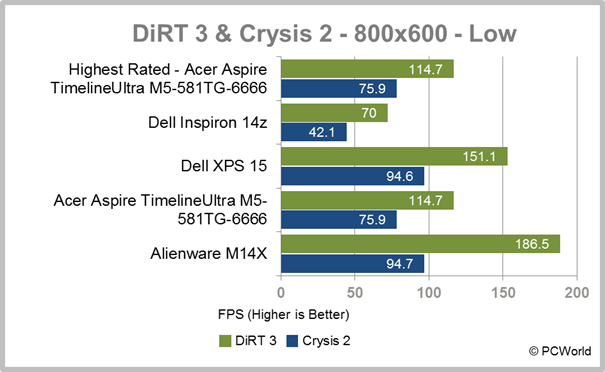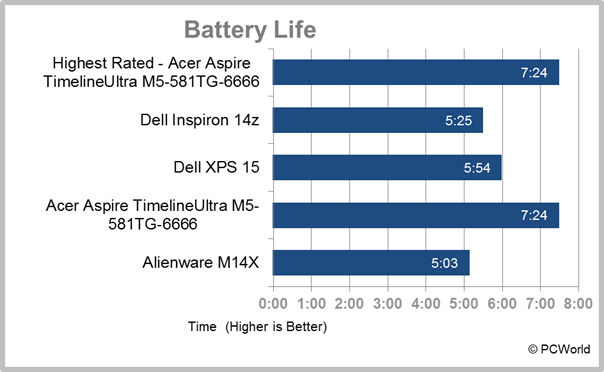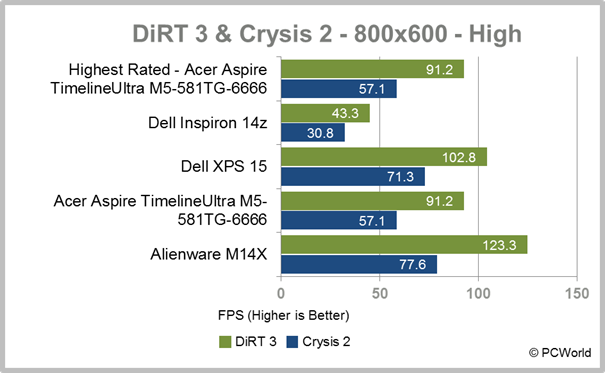Technical Reference: Apache 2.0 DMZ Secure Server Install
This document is a guide to installing and hardening an Apache 2.0 web server to common security standards. It will guide you through practical measures to harden your Apache server, by way of example.
Because a web server is often placed at the edge of the network, it is one of the most vulnerable services to attack. Therefore, it's vital that you follow this guide to ensure that:
1) The opportunity to compromise the web server is limited
2) Should the web server be compromised, the damage potential to the rest of the network, data, and systems is limited.
1. Prepare the host operating system
1.1 Install and secure the host operating system.
Follow the hardening guidelines in the The Center for Internet Security. Hardening the host O/S ensures that, should someone compromise the security of your web server, the amount of damage that they could inflict will be minimized.
1.2 Create the directories to hold the Apache files
It's important to separate the binaries /bin, docs (/htdocs), and logs (/logs) into separate partitions on the system. You can choose whatever root you want, but this example will use /opt/apache2 as the root directory for the Apache web server.
1.3 Create the host groups for administering and running the server.
Create a distinct group for all the users who will have permission to change the configuration, start, and stop the web server. For example, if you want to call the group "webadmin", create it like this:
# groupadd webadmin
Create a distinct group for the web server user – no one will actually log into this group, but it will only be used to hold the userid which will run the web server. For example, if you want to call that group "webserv", create it like this:
# groupadd webserv
Take note that you should not create a "web developer" group on this host. Since this is a hardened production host you must not provide web developers login accounts on this system. Instead, developers should deploy documents and code to the server using your code/content deployment system, such as Kintana's Apps*Integrity.
1.4 Create an unprivileged host user id to run the server.
Never run the web server as root; if the web server is ever compromised, the attacker will have complete control over the system. Instead, the best way to reduce your exposure to attack when running a web server is to create a unique unprivileged userid for the server application. The userid nobody is often used for this purpose, but a userid and group that are unique to the web server is a more secure solution.
By default the web server uses privileged ports (port 80 and 443) and, when configured for secure operation, must have root privileges to open its log files and start the dæmon. (Therefore, the web server daemon will have to be started as "root", unless you configure it to use a port higher than 1024.) Once the server's startup tasks are complete, all active instances can run as the unprivileged user.
Use the following command line entries as patterns for creating a group and user for the web server. Here's an example if you were to use "webserv" as the user:
# useradd -d /opt/apache2/htdocs -g webserv -c "Web Server" webserv
1.5 Lock down the web server account
It's important that no one can successfully execute a password guessing attack against this account, so in this step, we'll restrict this account so that no one can log into it.
1.5.1 Issue this command to lock the password for the web server account:
# passwd –l webserv
Password changed.
1.5.2 To be sure the account is locked, issue the command:
# grep webserv /etc/shadow
…a :!: at the beginning of the line indicates that the password is locked.
1.5.3 Issue this command to remove the shell for this account:
# usermod –s /bin/false webserv
1.5.4 To be sure the account is locked, issue the command:
# grep webserv /etc/passwd
…/bin/false at the end of the line indicates that the shell is set to a non-existent shell.
1.5.5 Test the web server account to be sure you can't login. Issue this command to try to log in:
> login webserv
2. Download and verify Apache source code
By default, web servers return information about the product and version they are running in the Server variable of the HTTP header. This information can be very useful to hackers, enabling them to target attacks to that specific server. To prevent that information from being returned from the web server, this step shows you how to modify that header and build your own copy of the web server.
Because web servers often host sensitive information, or allow users to log in with plain-text passwords, it's important to encrypt the HTTP traffic. Therefore, this section will show you how to configure mod_ssl on your web server.
Note: Don't build the web server on your production, hardened host. Build it on a staging or development server (with identical O/S), and then copy it to your production host.
These steps will guide you through downloading Apache source code, validating it, compiling it, and installing it. We don't recommend use of pre-compiled or DSO versions. DSO versions may allow a hacker to introduce new "features" without having to recompile the code.
If you intend to add other module to your Apache web server installation, repeat the validation steps below for each module you add.
2.1 Download the latest version of Apache 2.0
Ensure that you retrieve the latest copy, so that you have cumulative bug fixes and security patches. You can download it from the Apache site.
From here, download four files:
1) The Apache source code itself, called something like httpd-2.0.45.tar.gz.
2) The PGP keys for the Apache signers: a file named "KEYS"
3) The PGP key for this source distribution, called something like httpd-2.0.45.tar.gz.asc
4) The MD5 checksum for this source distribution, called something like httpd-2.0.45.tar.gz.md5
wget http://www.apache.org/dist/httpd/httpd-2.0.45.tar.gz
wget http://www.apache.org/dist/httpd/KEYS
wget http://www.apache.org/dist/httpd/httpd-2.0.45.tar.gz.asc
wget http://www.apache.org/dist/httpd/httpd-2.0.45.tar.gz.md5
2.2 Verify PGP signature for the Apache source
To ensure that you have an authentic version from the Apache Group, and that it's not been tampered with (remember, there are many mirrors from which you can download the Apache source), you should check the PGP signature. If you don't have PGP installed on this server, you can validate these files on another machine.
a) If you don't already have them in your PGP keyring, import the public keys from the Apache Group into your keyring:
~> pgp –ka KEYS
b) Check the PGP signature:
~> pgp httpd_2.0.45.tar.gz
…if the signature is correct, you should get something similar to this:
-- CUT --
File 'httpd-2.0.45.tar.gz.asc' has signature, but with no text.
Text is assumed to be in file 'httpd-2.0.45.tar.gz'.
Good signature from user "Justin R. Erenkrantz <justin@erenkrantz.com>".
Signature made 2003/03/31 07:49 GMT
WARNING: Because this public key is not certified with a trusted signature, it is not known with high confidence that this public key actually belongs to: "Justin R. Erenkrantz <justin@erenkrantz.com>".
The fact that it says, "Good Signature from…" is what we're looking for here. The WARNING statement indicates that we've not verified this signature with a 3rd party, which is ok here.
2.3 Verify the MD5 checksum for the Apache source.
MD5 is a way to validate the integrity of the file itself, much more reliable than checksum and similar methods. Normally, mismatches in the MD5 checksum from the Apache source are the result of download errors or file corruption. If you don't have MD5 on your system, you can download it from here.
Compare the results of these two commands – visually inspect them to ensure they match (if they don't, download it again):
~> pwd
/usr/local/build
~> cat httpd-2.0.45.tar.gz.md5
MD5 (httpd-2.0.45.tar.gz) = 1f33e9a2e2de06da190230fa72738d75
~> md5 apache_1.3.27.tar.gz
MD5 (httpd-2.0.45.tar.gz) = 1f33e9a2e2de06da190230fa72738d75
2.4 Extract the zipped Apache source file.
Finally, you need to unzip and untar the source file.
~> /pwd
/usr/local/build
~> tar xvfz httpd-2.0.45.tar.gz
This will create a new directory under your current one, named "httpd-2.0.45".
3. Create SSL certificates
SSL support requires an SSL library on your system, such as OpenSSL. If you're not sure how to find and install it, look at the Apache 1.3 hardening guide. This section will walk you through configuring your SSL certificate for encrypting your HTTP traffic. It will help you build a validated certificate and install it on your web server. We'll add the configured certificates to the Apache configuration in the next step.
3.1 Create a key and certificate request for your web server
Using OpenSSL, the following command will create a 1024-bit private key named, "private.key" and generate a certificate signing request (CSR). You need to have the CSR signed by a Certificate Authority (CA) who can validate your identity. When prompted to input information, note the answers in bold print below. (Answer the prompts with the information relevant for your server, of course).
Note: If you provide a challenge password, you will be unable to start the web server unattended. We don't recommend providing a challenge password, just leave it blank.
~> pwd
/usr/local/build
~> openssl req -nodes -newkey rsa:1024 -keyout /usr/local/build/server.key -out /usr/local/build/server.crt
Using configuration from /usr/share/ssl/openssl.cnf
Generating a 1024 bit RSA private key
................++++++
.......++++++
writing new private key to 'server.key'
-----
You are about to be asked to enter information that will be incorporated into your certificate request.
What you are about to enter is what is called a Distinguished Name or a DN.
There are quite a few fields but you can leave some blank
For some fields there will be a default value,
If you enter '.', the field will be left blank.
-----
Country Name (2 letter code) [AU]:US
State or Province Name (full name) [Some-State]:NC
Locality Name (eg, city) []:RTP
Organization Name (eg, company):XianCo Systems, Inc.
Organizational Unit Name (eg, section) []:InfoSec
Common Name (eg, YOUR name) []:xianshield.xianco.com
Email Address []:webmaster@xianshield.xianco.com
Please enter the following 'extra' attributes
to be sent with your certificate request
A challenge password []: <blank>
An optional company name []: <blank>
Most importantly, make sure your "Common Name" above matches the DNS name of your server. The locale information is less important, but we think it's best to use the locality of the server itself.
3.2. Submit CSR for validation/signing by a CA.
Next, you need to submit your CSR for signing by a CA. This will eliminate the "warning dialog" that a browser will pop up when a user accesses your site. This is because the user's browser has a set of trusted CAs that will prevent you from being notified if the web server's site certificate is signed by a CA you've trusted in your browser already (such as Verisign or DST). In this example, we will submit the request to your company's CA for signing. (You can use another CA if you want).
Send your request for a certificate to the CA. Include your name, your web server (Apache, in this case) your OS, and of course, the .csr (certificate signing request).
3.3 Rename your certificate files
The names aren't important, they just have to match what's in conf/ssl.conf. You will receive 2 files from the PKI team. The first file will be your server certificate (and will probably be named <server name>.cer), the 2nd file is the certificate chain. Here, we'll rename them to fit what's specified in conf/ssl.conf.
mv "XianCo CA (01-03).cer" ca.crt
mv xianshield.cer server.crt
3.4 Copy certificates to your server.
Since you received these certs via email, and they're now sitting on your laptop, we need to copy both server.crt and ca.crt to the server. We'll copy them up to /usr/local/build. We'll move them both to the appropriate locations under conf/ssl.conf later.
scp *.crt xianshield:/usr/local/build/.
4. Configure and build the Apache Server
In this section, we'll configure Apache with SSL and mod_ldap support. As of Apache V2, these are both included modules, and don't require a separate download.
In order to customize Apache to the extent necessary, we need to download the source for the latest version of Apache. Once that's complete, we'll configure and test it.
4.1 Alter the Apache version
We want to remove/modify the default HTTP response header parameter for the "Server:" token to hide the identity of our web server. (You'd be surprised how many vulnerability scanners are looking for specific versions of Apache.) To do this, we must open a header file (httpd.h) prior to compiling the server. To do this, edit the ap_release.h file located in ${ApacheSrcDir}/include
~> pwd
/usr/local/build/httpd-2.0.45/include
~> vi ap_release.h
…
#define AP_SERVER_BASEVENDOR "Apache Software Foundation" ß Change this…
#define AP_SERVER_BASEPRODUCT "Apache" ß and this
These are the lines you want to change; change these to remove references to Apache. We'll hide the actual version using the ServerTokens directive in the httpd.conf file.
Example:
#define SERVER_BASEVENDOR "Network Services"
#define SERVER_BASEPRODUCT "Networks, Inc."
4.2 Configure Apache software for compilation
There are a few standard modules that should be disabled when you set up the Apache web server.
Modules to disable
Generally, the following modules make it easier to configure/support your web server but also give too much information to attackers. We recommend that you disable the following default modules for your production server:
 info: gives out too much information about your web server to potential attackers.
info: gives out too much information about your web server to potential attackers. status: gives out server stats via web pages
status: gives out server stats via web pages autoindex: provides directory listings when no index.html file is present
autoindex: provides directory listings when no index.html file is present imap: provides server-side mapping of index files
imap: provides server-side mapping of index files include: provides server-side includes (.shtml files)
include: provides server-side includes (.shtml files) userdir: translates URLs to user-specific directories
userdir: translates URLs to user-specific directories auth: you won't need it – you'll set up authentication against LDAP via mod_ldap
auth: you won't need it – you'll set up authentication against LDAP via mod_ldapModules to enable
Here are two modules that will provide strong authentication and encryption for your web server. If you have any protected content on your web server, it's important that you only allow your users to access it over SSL, otherwise your user passwords will be sent in clear text, subject to snooping.
 ssl: Encrypts the traffic from the browser to the web server – an important means of protecting login passwords and sensitive data.
ssl: Encrypts the traffic from the browser to the web server – an important means of protecting login passwords and sensitive data. auth_ldap: Allows you to validate passwords against ldap.xianco.com or other LDAP.
auth_ldap: Allows you to validate passwords against ldap.xianco.com or other LDAP.A word about LDAP authentication
It's important that you don't set up your own userid/password store, since it propagates passwords into insecure locations. Instead, you should modify your configuration to defer authentication to a central store, such as a centrally maintained LDAP. To authenticate against an LDAP store, you need to compile Apache with support. In order to use mod_ldap, you'll need LDAP libraries installed on your system. You can use OpenLDAPor Netscape Directory SDK for the LDAP client libraries. Configuration commands
Here's how to configure Apache with these options:
~> pwd
/usr/local/build/httpd-2.0.45
~> sudo ./configure –-prefix=/opt/apache2 \
--enable-so \
--enable-ssl \
--with-ldap \
--enable-ldap \
--enable-auth-ldap \
--disable-info \
--disable-status \
--disable-autoindex \
--disable-imap \
--disable-include \
--disable-userdir \
--disable-auth
checking for chosen layout... Apache
checking for working mkdir -p... yes
checking build system type... sparc64-unknown-linux-gnu
checking host system type... sparc64-unknown-linux-gnu
checking target system type... sparc64-unknown-linux-gnu
Configuring Apache Portable Runtime library ...
…
4.3 Compile the Apache server
Now that the software is validated and configured, it's time to compile it. Since you won't have a compiler on your production host, we'll compile and install it on a separate server, then tar/compress it and scp it to your production host. You'll need to run make using "sudo" so that Apache knows it can use ports < 1000.
~> pwd
/usr/local/build/httpd-2.0.45
~> sudo make
===> src
make[1]: Entering directory `/usr/local/build/httpd-2.0.45'
make[2]: Entering directory `/usr/local/build/httpd-2.0.45/src'
===> src/regex
sh ./mkh -p regcomp.c >regcomp.ih
…
4.4 Install the Apache server
If you have followed our instructions for securing the host, you will have to unpack the distribution and compile it on a separate host. To make your server more secure, use a separate disk partition for your web content. Create a unique mount point for this directory -- htdocs is a good name to use, but make it somewhere outside the ServerRoot directory. You'll need to update /etc/vfstab to mount this partition as part of your server's startup process.
Do not use the htdocs directory included in the distribution as your DocumentRoot. This directory contains user documentation that you don't want to make available to the public as it contains information a potential attacker could use to penetrate your system. (The attacker can deduce what kind of web server you're running, and hone his attack accordingly.) Move these documentation files into your support directory so the webmasters for your site can refer to them as needed.
You'll need to install the Apache server using "sudo" privileges or as root.
~> pwd
/usr/local/build/httpd-2.0.45
~> sudo make install
===> [mktree: Creating Apache installation tree]
./src/helpers/mkdir.sh /opt/apache2/bin
./src/helpers/mkdir.sh /opt/apache2/libexec
./src/helpers/mkdir.sh /opt/apache2/man/man1
./src/helpers/mkdir.sh /opt/apache2/man/man8
./src/helpers/mkdir.sh /opt/apache2/conf
..
5. Install SSL certificates
Now that the server is installed, we need to copy certificate key, server certificate, and CA chain to Apache's configuration directory.
5.1 Set up the Apache certificate directories
~> pwd
/opt/apache2/conf
~> sudo mkdir ssl.crt ssl.key
5.2 Copy the certificate and key to the SSL configuration directory
~> sudo cp /usr/local/build/server.crt ./ssl.crt/.
~> sudo cp /usr/local/build/server.key ./ssl.key/.
6. Configure the Apache server
Configure the file permissions and runtime settings of the Apache server. It's important that you place your htdocs, cgi-bin, and logs directories on separately mounted filesystems.
6.1 Configure httpd.conf
Set the following in your httpd.conf file. You can also download an example httpd.conf with these settings here.
Directive and setting | Description/rationale |
| ServerSignature Off | Prevents server from giving version info on error pages. |
| ServerTokens Prod | Prevents server from giving version info in HTTP headers |
| Listen 80 (remove) | Remove the "Listen" directive – we'll set this directive only in ssl.conf, so that it will only be available over https. |
| User webserv (or whatever you created in step 2 above) | Ensure that the child processes run as unprivileged user |
| Group webserv (or whatever you created in step 2 above) | Ensure that the child processes run as unprivileged group |
| ErrorDocument 404 errors/404.html ErrorDocument 500 errors/500.html etc. | To further obfuscate the web server and version, this will redirect to a page that you should create, rather than using the default Apache pages. |
| ServerAdmin <hostname>-webmaster@xianco.com | Use a mail alias – never use a person's email address here. |
| UserDir disabled root | Remove the UserDir line, since we disabled this module. If you do enable user directories, you'll need this line to protect root's files. |
| <Directory /> Order Deny, Allow deny from all </Directory> | Deny access to the root file system. |
| <Directory /opt/apache2/htdocs"> <LimitExcept GET POST> deny from all </LimitExcept> Options -FollowSymLinks -Includes -Indexes -MultiViews AllowOverride None Order allow,deny Allow from all </Directory> | LimitExcept prevents TRACE from allowing attackers to find a path through cache or proxy servers. The "-" before any directive disables that option. FollowSymLinks allows a user to navigate outside the doc tree, and Indexes will reveal the contents of any directory in your doc tree. Includes allows .shtmlpages, which use server-side includes (potentially allowing access to the host). If you really need SSI, use IncludesNoExecinstead. AllowOverride None will prevent developers from overriding these specifications in other parts of the doc tree. |
| AddIcon (remove) IndexOptions (remove) AddDescription (remove) ReadmeName (remove) HeaderName (remove) IndexIgnore (remove) | Remove all references to these directives, since we disabled the fancy indexing module. |
| Alias /manual (remove) | Don't provide any accessible references to the Apache manual, it gives attackers too much info about your server. |
You should familiarize yourself with the following parameters. Unless you are running a high-volume web site, you can safely leave the settings at their default values. If you are running a high-volume web site, you'll want to adjust these directives upward to better withstand denial-of-service attacks.
 StartServers
StartServers MinSpareServers
MinSpareServers MaxSpareServers
MaxSpareServers Timeout
Timeout Keepalive
Keepalive MaxKeepAliveRequests
MaxKeepAliveRequests KeepAliveTimeout
KeepAliveTimeout MaxClients
MaxClients MaxRequestsPerChild
MaxRequestsPerChild
6.2 Configure ssl.conf
Set the following in your ssl.conf file. You can also download an example ssl.conf with these settings here.
Directive and setting | Description/rationale |
| SSLCertificateChainFile/opt/apache2/conf/ssl.crt/ca.crt | (Find this line and uncomment it). This points to the Certificate Authority file for your chained certificate. |
6.3 Remove default Apache files
It's important to remove default files such as .html files and CGI scripts (yes, even the Apache manual). This will help obfuscate the server you're running, targetted attacks against your web server. You'll probably want to build a simple index.html page to place in the htdocs directory, just so you know the web server is working when you start it.
~> sudo rm –fr /opt/apache2/htdocs/*
~> sudo rm –fr /opt/apache2/cgi-bin/*
~> sudo rm –fr /opt/apache2/icons
To test that your web server is running, you can now place this file in your htdocs directory – it's just a simple index.html file. Make sure you set the permissions to world-readable.
6.4 Set directory and file permissions for the server
To protect the directories on your server, it's important that you protect the directories themselves.
 bin is where the executable portion of the Apache web server is. It should be readable/executable only by members of the webadmin group, but only writable by root.
bin is where the executable portion of the Apache web server is. It should be readable/executable only by members of the webadmin group, but only writable by root.
~> sudo chown –R root:webadmin /opt/apache2/bin
~> sudo chmod –R 770 /opt/apache2/bin
 conf is where your web server configuration files are and needs to be read/writable only by the webadmin group.
conf is where your web server configuration files are and needs to be read/writable only by the webadmin group.
~> sudo chown –R root:webadmin /opt/apache2/conf
~> sudo chmod –R 770 /opt/apache2/conf
 logs is where your access and error logs will go. It should be readable only by the webadmin group.
logs is where your access and error logs will go. It should be readable only by the webadmin group.
~> sudo chown –R root:webadmin /opt/apache2/logs
~> sudo chmod –R 755 /opt/apache2/logs
 htdocs is where your HTML files are and needs to be world readable, but writable only by root (you should copy content in from a staging server).
htdocs is where your HTML files are and needs to be world readable, but writable only by root (you should copy content in from a staging server).
~> sudo chown –R root /opt/apache2/htdocs
~> sudo chmod –R 775 /opt/apache2/htdocs
 cgi-bin is where your executable scripts are and needs to be world read/executable, but writable only by root (you should copy content in from a staging server).
cgi-bin is where your executable scripts are and needs to be world read/executable, but writable only by root (you should copy content in from a staging server).
~> sudo chown –R root /opt/apache2/cgi-bin
~> sudo chmod –R 775 /opt/apache2/cgi-bin
7. Make final configuration and start server
Lastly, we need to modify the startup configuration for Apache and restart the server.
7.1 Modify Apache startup script so that it will notify you when it's restarted.
As a failsafe measure, you should notify your webmaster alias any time this server is restarted. That way, you'll be notified of any unauthorized attempt.
Open /opt/apache/bin/apachectl and add something like this to the file:
tail /opt/apache2/logs/error_log |
/bin/mail -s 'Apache web server has restarted' <hostname>-webmaster@xianco.com
7.2 Test your configuration by starting the server
sudo /opt/apache2/bin/apachectl startssl
7.3 Keep your web server patched
Check web sites for Apache and all modules regularly and apply important patches.
8. Configure authentication against an LDAP directory.
In this final section, we'll configure the Apache httpd.conf file so that resources are authenticated against an LDAP server. This step really can't be run until you've installed the web server. Once you've got your web server installed, just add the LDAP authentication directives to any directory (or httpd.conf file) where you want password protection with CEC credentials. Here's an example of protecting a directory named "Internal"
<Location "/internal">
AuthName CEC
AuthType Basic
AuthLDAPURL ldap://ldap.xianco.com:389/ou=employees,ou=people,o=xianco.com?uid?sub?(objectclass=xiancoPerson)
require valid-user
</Location>



















